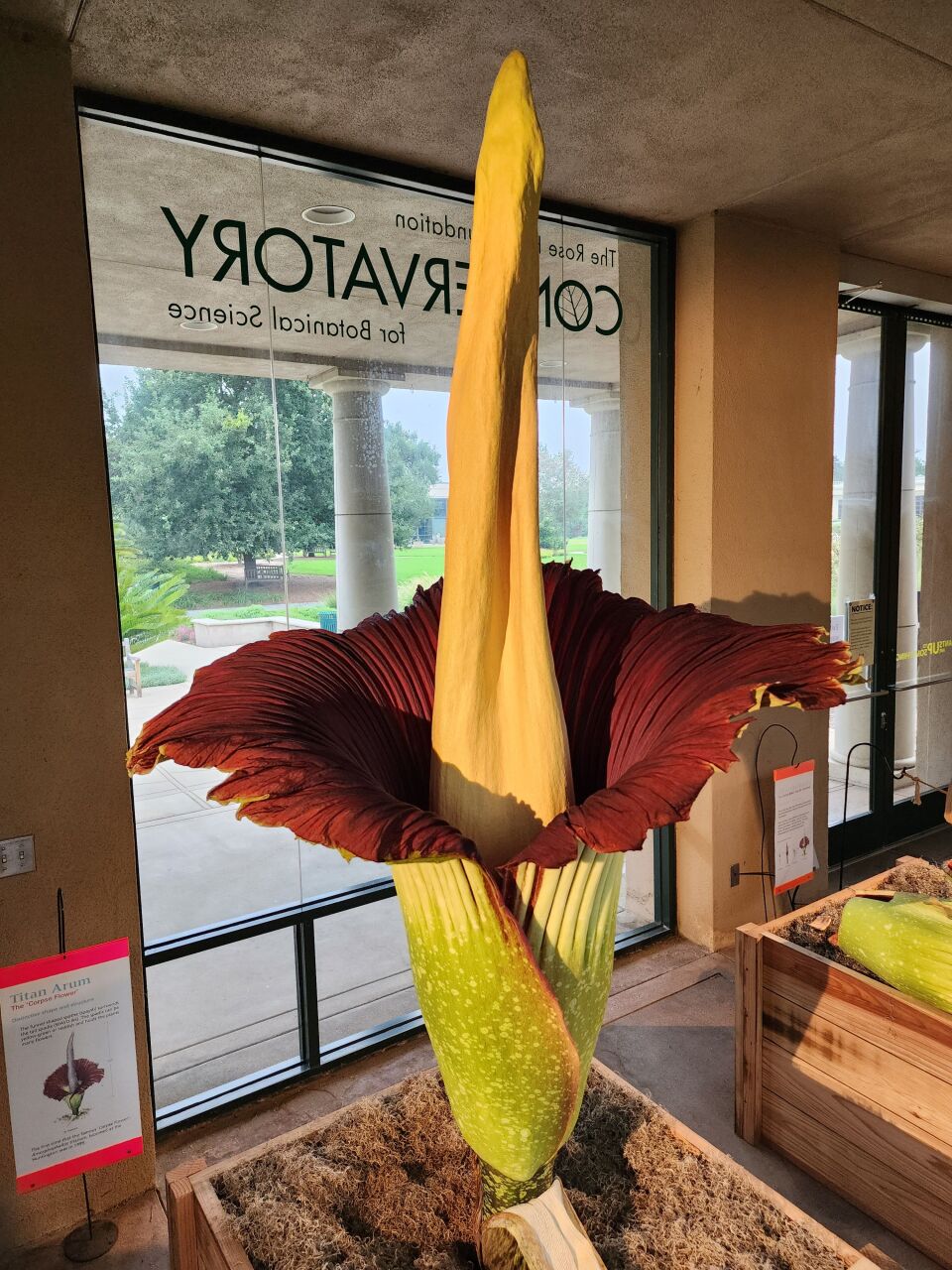Truth matters. Community matters. Your support makes both possible. LAist is one of the few places where news remains independent and free from political and corporate influence. Stand up for truth and for LAist. Make your year-end tax-deductible gift now.
The Huntington's smelly corpse flower named Green Boy is expected to bloom any day

One of the Huntington’s rare and endangered corpse flowers is expected to bloom any day now, drawing hundreds of visitors to see — and smell — the plant in San Marino.
This year’s bloom is from the plant named Green Boy, which last gave us a show in 2021.
Here are some things to know that don’t stink about Green Boy and its corpse flower friends.
Why is it called Green Boy?
Green Boy is a playful nod to Thomas Gainsborough’s “The Blue Boy," one of the Huntington’s most recognizable works in its art collection. The plant’s very green central column — called the spadix — also inspired the name, according to the estate’s website.
Why are they so rare?
Amorphophallus titanum, better known as the corpse flower, is very rare and often referred to as the largest plant in the world. When in bloom, the flower can grow up to six inches per day, reaching more than 12 feet high.
The good news is that the Huntington is home to 43 flowers, making it one of the largest collections in North America. Most of the plants in the collection are descendants of a plant that bloomed in 2002, with possibly more on the way.
Staff will continue to use brushes to conduct pollination, according to the Huntington’s website. When seeds are successfully produced, they are planted in on-site containers or shared with other institutions.
Since 1999, the Huntington has recorded 27 blooms. The plants are stored in a greenhouse, and when signs of blooming show, staff move the flower to the Rose Hills Foundation Conservatory for Botanical Science for the public to experience.

What’s that smell?
When in bloom, the flower opens to reveal a maroon, velvety interior. It also releases a stench, often described as that of rotten, decaying meat.
The smell is to attract nighttime pollinators like flesh flies, carrion beetles and sweat bees. It can also draw hundreds of visitors to the Huntington to catch a whiff.
What if I want to see it?
To catch the rare bloom, you can visit the library’s Rose Hills Foundation Conservatory for Botanical Science. Admission to the conservatory is included with the purchase of a ticket to The Huntington. You can also watch the livestream here.
Where can I see other corpse flowers locally?
Aside from the Huntington, the corpse flower can also be seen at Long Beach State and the San Diego Botanical Garden. Long Beach just celebrated a third bloom last month.











